When looking at the Hisense E7NQ PRO in everyday use, it is immediately clear that this is a television designed with a wide audience in mind. The picture, while not immediately striking, gains a lot after proper calibration. The colours then appear more natural, and the brightness at around 500 cd/m² makes it easy to comfortably watch in a sunny living room. The wide viewing angles offered by the IPS panel are an added bonus – we no longer have to fight for the best spot on the couch. Dolby Vision can enhance the overall experience, while in SDR mode the TV displays a really pleasant picture. Sports and gaming fans will find even more reasons to be satisfied here. The high refresh rate (144 Hz) ensures smooth movements of the ball across the field, and low latency, VRR, ALLM, and compatibility with G-Sync and Dolby Vision in games caters to those who value responsiveness and immersive gaming experiences. Because of all this, the E7NQ PRO becomes an interesting option for computer gamers as well. The VIDAA system works quite efficiently – there are plenty of apps available, although it lacks typical music apps like Spotify or Tidal. However, you can count on recording, AirPlay, mirroring, and decent compatibility with wireless devices. Yes, there are some shortcomings and imperfections – especially regarding subtitle support from USB or perfect management of brightness and contrast, and the lack of HGIG may disappoint the most demanding gamers. When we gather all impressions and experiences, the E7NQ PRO emerges as a device that will perform well in many situations. It has its advantages – such as wide viewing angles, pleasant picture after calibration, plenty of additional features, and great motion fluidity in sports or gaming. At the same time, it's worth remembering that this is not a television intended for those seeking perfect experiences for evening screenings in complete darkness. In low light, the shortcomings of contrast and black levels become more obvious, which is why we suggest that those planning mainly evening viewing consider alternatives among competitors. Nonetheless, as a versatile solution for everyday use – from watching television in a bright living room to playing console and computer games – the E7NQ PRO performs quite solidly.
- Matching (Score)
- Our verdict
- TV appearance
- Where to buy
- Contrast and black detail
- HDR effect quality
- Factory color reproduction
- Color reproduction after calibration
- Smoothness of tonal transitions
- Image scaling and smoothness of tonal transitions
- Blur and motion smoothness
- Console compatibility and gaming features
- Input lag
- Compatibility with PC
- Viewing angles
- TV efficiency during daytime
- Details about the matrix
- TV features
- Apps
- Playing files from USB
- Sound
Hisense E7NQ PRO vs Hisense E8Q
Direct compare
E8Q

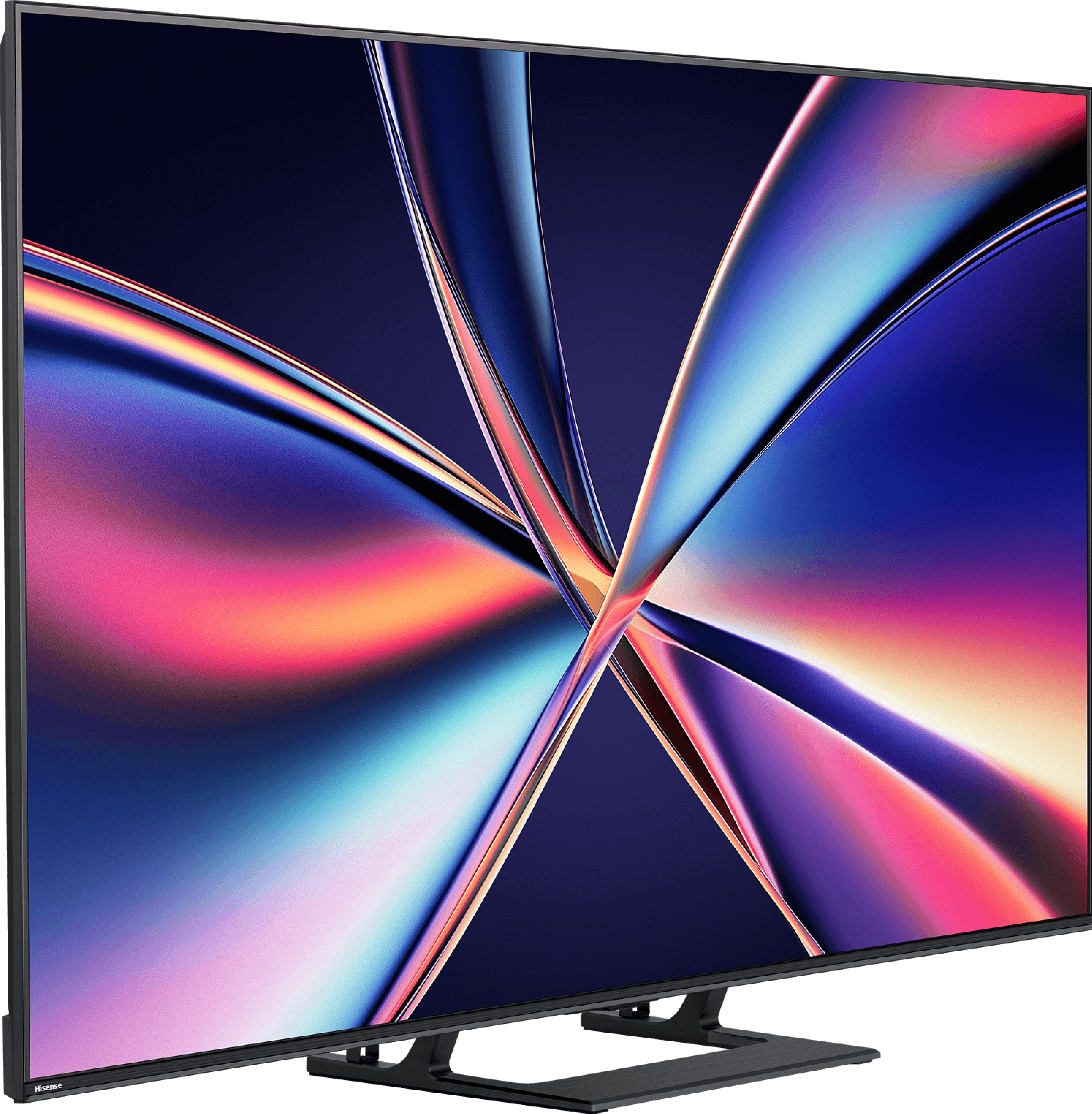
Panel type: LCD IPS
Resolution: 3840x2160
System: VIDAA
Model year: 2024
Complete the survey to find out the result

Panel type: LCD VA
Resolution: 3840x2160
System: VIDAA
Model year: 2025
Complete the survey to find out the result

Overall rating
7.0
7.1
Movies and series in UHD quality
6.4
6.7
Classic TV, YouTube
6.3
6.8
Sports broadcasts (TV and apps)
6.6
6.5
Gaming on console
8.0
8.0
TV as a computer monitor
7.6
8.6
Watching in bright light
6.2
6.2
Utility functions
8.9
8.4
Apps
7.7
7.7
Sound quality
7.0
7.2
Complete the survey to find out what fits your preferences
Advantages
Wide viewing angles thanks to the IPS matrix
Good colour potential after calibration
High refresh rate (144 Hz), VRR, ALLM, and G-Sync for gamers
Support for Dolby Vision
A good number of additional features (recording, AirPlay, mirroring)
Support for key audio formats (Dolby Atmos, DTS:X)
Relatively low input lag
Great contrast and deep blacks
Very good smoothness of tonal transitions (close to reference level)
High brightness
Supports 4K 144 Hz and even 240 Hz in Full HD
VRR, ALLM, G-SYNC – a full package for gamers
Low input lag
Many classic TV features built into the VIDAA system
Disadvantages
Average contrast and black levels
Issues with subtitle playback from USB
Missing HGIG support
In some scenes, issues with HDR brightness management
Unavailability of some popular music apps (Spotify, Tidal)
No support for HGiG (makes setting HDR on consoles difficult)
Poor viewing angles – typical for VA panels
Closed VIDAA system – lack of some applications
Inferior sound quality compared to the twin model U7Q
Our verdict
Hisense E8Q is a television that clearly draws heavily from the U7Q model – and that’s a great thing. After all, this is its European version, not another “slimmed down” mutation. After just a few moments with this screen, it’s clear that the E8Q is putting up a fight. And in many areas, it really succeeds. To start with – what impresses is that the blacks are deep, the contrast is high, and the brightness exceeds the threshold that we can simply call satisfactory. Add to that nearly perfect fluidity of tonal transitions, and we have an image that looks very mature, especially for this price segment. In gaming? Just as good. VRR, ALLM support, 144 Hz in 4K, and even 240 Hz in Full HD – it’s hard to find fault here. Well… almost. Because the E8Q has one additional flaw compared to the U7Q – the sound. In our unit, at moderate volume levels, the back of the cabinet began to resonate, producing rather unpleasant crackling noises. This might be a flaw of the test unit, but since the U7Q simply performed better – it’s worth noting. Especially if you find both models at a similar price. We can confidently state that the E8Q is a television that can confidently fight for the attention of those looking for a quality Mini-LED at reasonable prices. If a good price opportunity arises, it’s definitely worth it – because we receive almost the same as in the U7Q. And that means a really solid picture, excellent gaming features, and overall very good equipment that you can stick with for a while.
TV appearance




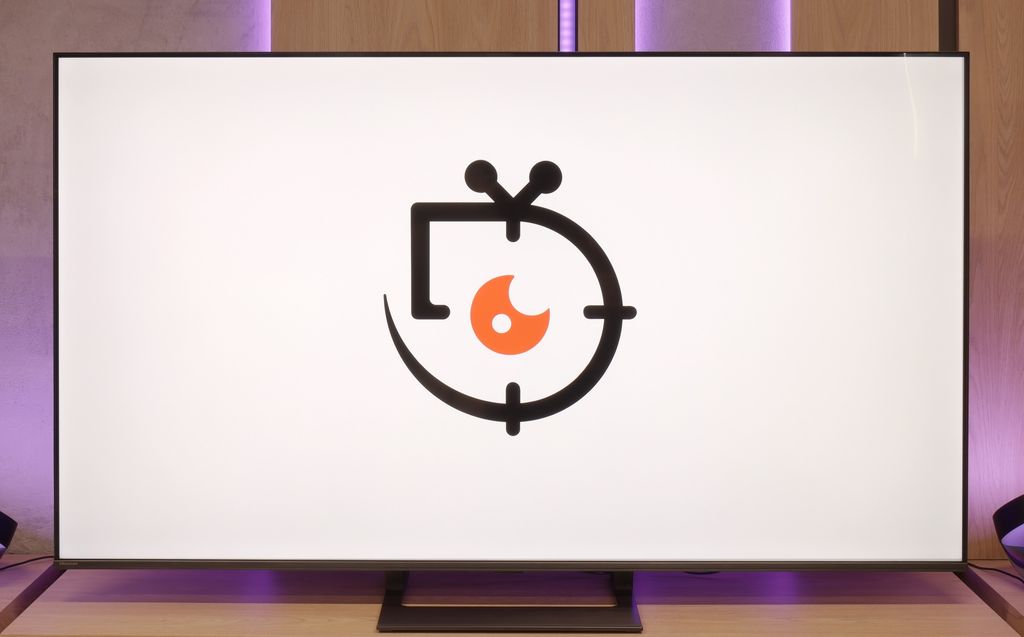
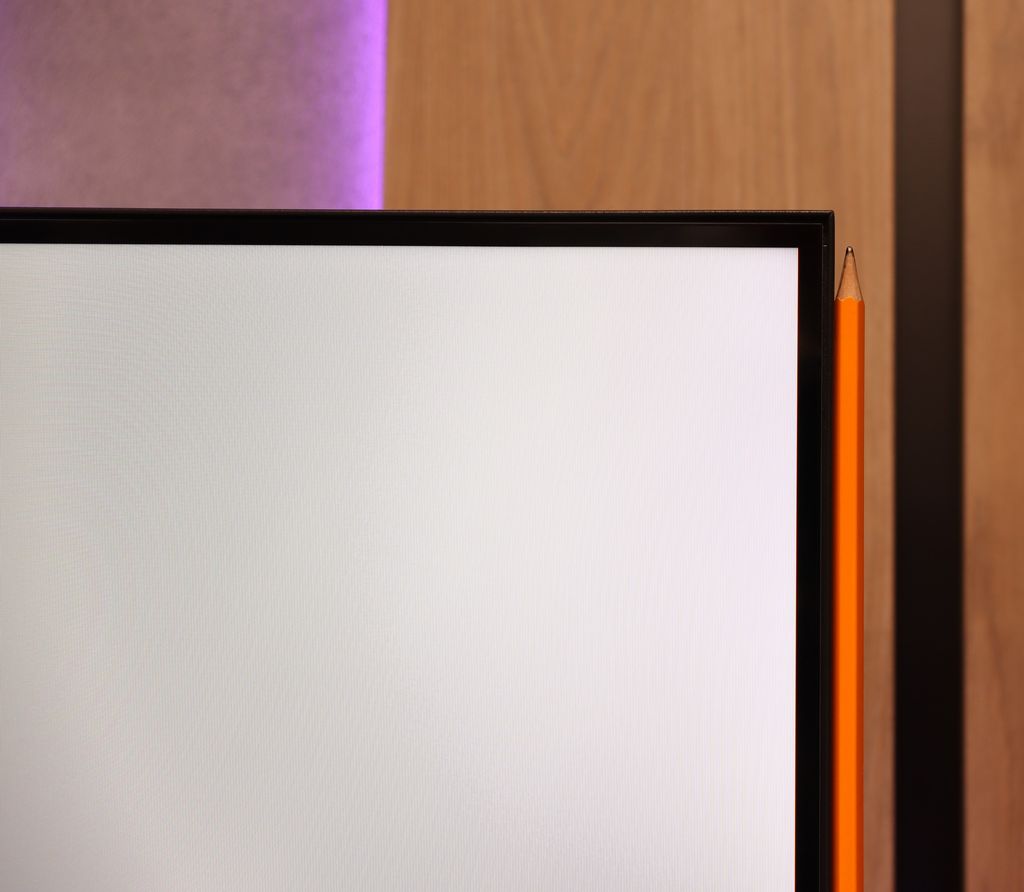
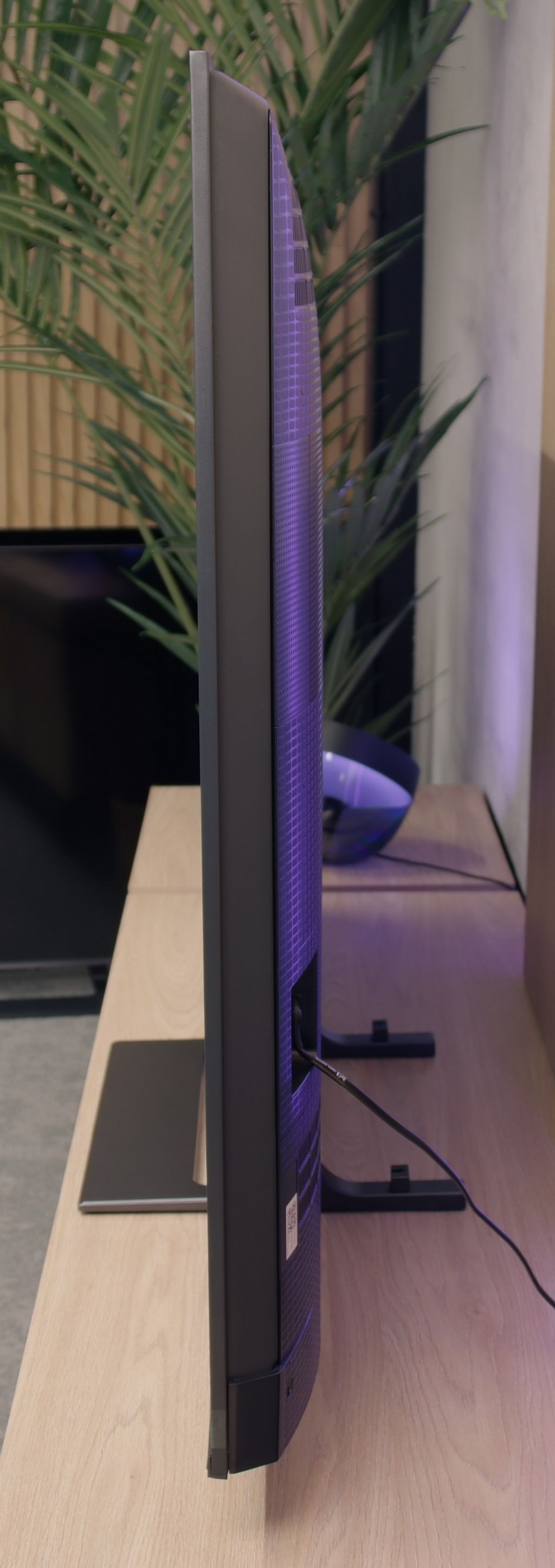
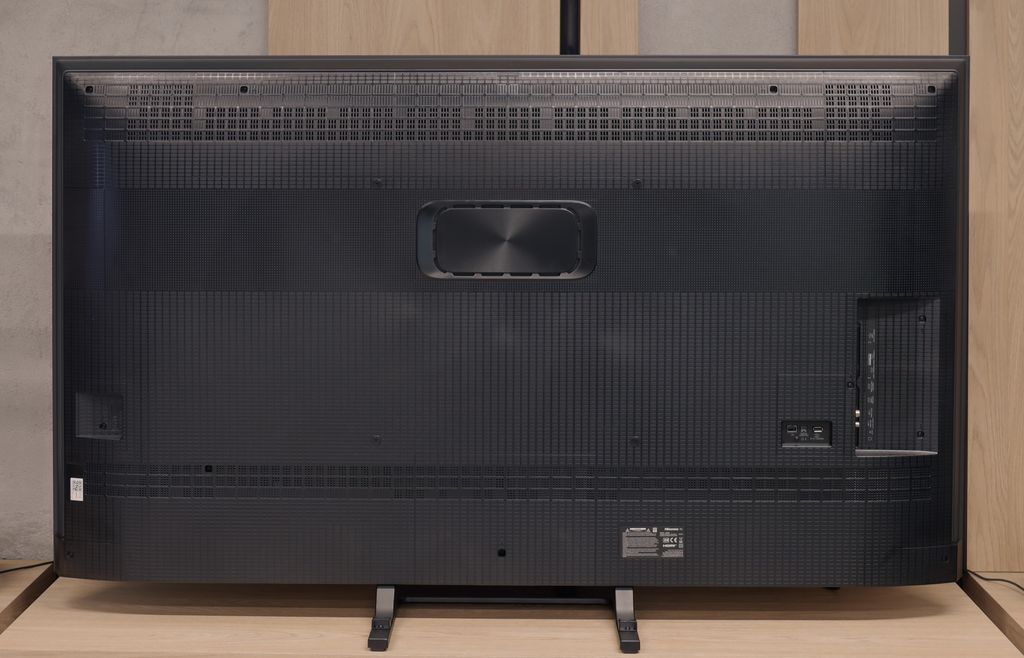
Contrast and black detail
5/10
7.6/10
Local dimming function: Yes, number of zones: 32 (4 x 8)
Local dimming function: Yes, number of zones: 220 (10 x 22)
Contrast:

Result
7,850:1

Result
4,150:1

Result
4,400:1

Result
2,500:1

Result
1,550:1

Result
277,000:1

Result
43,700:1

Result
15,750:1

Result
8,850:1

Result
6,350:1
Halo effect and black detail visibility:

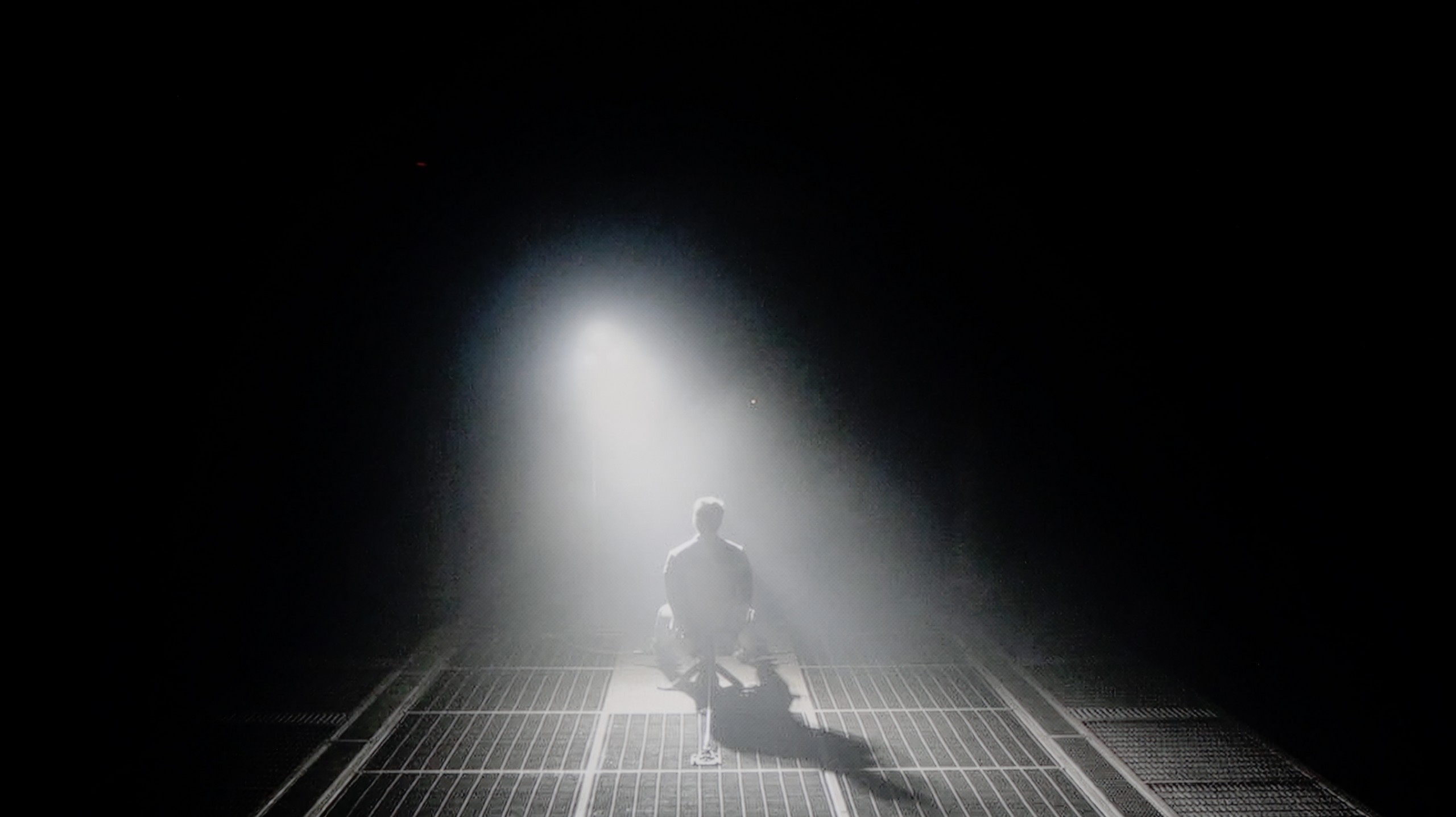
The Hisense E7NQ PRO we've tested, in the 65-inch version, uses an IPS panel, which unfortunately isn't known for high contrast. As a result, black appears slightly "washed out" and occasionally takes on a silvery hue, which is clearly visible in our pictures. The manufacturer tried to address this by equipping the TV with local dimming functionality. Unfortunately, in this 65-inch model, we only have 32 zones available, which, while it helps a bit, is definitely not enough to achieve truly impressive results – especially since the panel itself cannot provide a cosmic depth of black.
During testing, we observed highly varied results. Under optimal conditions, it managed to reach around 7800:1, which can be considered decent; however, in more challenging scenes, the contrast dropped to around 2000:1. Such values are at best average and simply do not befit a TV in this price range. Ultimately, while local dimming somewhat salvages the situation, what’s really lacking here is true deep, inky black and contrast that would leave a greater impression on us.
Similar to the U7Q, the E8Q model uses a VA panel and Mini-LED backlighting. The number of dimming zones also remains at a very similar level – in the 65-inch variant we tested, we counted 220 zones, which is exactly the same as in the U7Q. On paper, it looks really good for this price segment, and even better – in practice. The contrast is high, and the black can be really deep. In many scenes, the lights are clearly separated, and the image gains a sense of space. This is one of those cases where Mini-LED shows it can come close to OLED quality – of course, assuming we understand the limitations we have to consider. In very challenging scenes, there may be slight brightening or a minor halo effect around bright objects, but these are phenomena typical of this technology and are not very noticeable. Ultimately – the contrast and blacks in the E8Q are really solid, nearly identical to the U7Q model. It's hard to nitpick, especially when we look at the price of the television.
HDR effect quality
5.1/10
4.5/10
Luminance measurements in HDR:

Result
408 nit

Result
299 nit

Result
446 nit

Result
215 nit

Result
527 nit

Result
531 nit

Result
148 nit

Result
320 nit

Result
100 nit

Result
625 nit
Scene from the movie “Pan” (about 2800 nits)


Scene from the movie “Billy Lynn” (about 1100 nits)


Static HDR10


Dynamic: Dolby Vision
Dynamic: Dolby Vision


HDR luminance chart:
Hisense E8Q
Luminancja HDR
Luminance of RGB colors
Hisense E7NQ PRO
Luminancja HDR
Luminance of RGB colors
Based on the luminance chart, which indicates around 550 nits, it can be considered that Hisense E7NQ PRO theoretically has the potential to somewhat "enchant" us with its HDR image. Testing various scenes from movies, we noticed that the television continually tries to balance between maintaining appropriate brightness and preserving the deepest blacks. In favourable conditions – such as in a scene from “The Meg”, where the screen is flooded with bright light – this brightness can indeed impress us. At such moments, we feel that HDR actually adds that "something" to the image. Unfortunately, when difficult shots with fine, bright elements on a dark background appear on the screen, the situation looks much worse. Brightness then drops to 200-300 nits, which is definitely too little to really distinguish HDR from standard SDR.
It is clear that the television is trying, but the hardware limitations – mainly the small number of local dimming zones – prevent it from fully spreading its wings. The end result can therefore be quite inconsistent and as average as the contrast tests. On the plus side, it deserves credit for its impressive coverage of the DCI-P3 colour gamut at 97%. This allows the television to present a truly wide range of colours, which, in the right scenes, can give us at least a glimpse of the real HDR effect. It’s just a shame that the whole picture isn't complemented by better control of brightness and contrast.
Since the E8Q is a twin of the U7Q, it’s no surprise that the HDR effect quality is almost identical. On paper, it looks promising – a peak brightness of 800 nits can impress in many scenes. Moments like light flashes in “The Meg” or shots of the sun in “Life of Pi” can indeed create a “wow” effect. But the longer we watch, the more we notice the limitations. The problem arises when small, bright details need to be shown against a dark background. In such situations, the dimming algorithms try to protect the contrast, but in the process, they also dim what should shine the brightest. Instead of dazzling details, we get almost invisible points of light. This is typical for Mini-LED in this price segment and is not surprising – but it’s worth knowing that the HDR effect will not always be fully preserved. Fortunately, the colour reproduction provides reasons to be pleased. A coverage of the DCI-P3 palette of about 94% is a very good result, and the quantum dot layer used (more precisely, PFS) does its job – colours are saturated and vibrant, especially with 4K content.
Factory color reproduction
5/10
6.5/10


Factory Mode
After calibration
When we took our copy of Hisense E7NQ PRO out of the box, we immediately started checking the available picture modes. Among them, the Filmmaker mode seemed the most promising, although it wasn't without its flaws. With standard SDR content, we noticed a clear tendency to overemphasise red, making the picture appear unnaturally warm. This was particularly evident in the comparison photo attached below. Conversely, when we switched to HDR content, the situation took a turn in the opposite direction. This time, blue was dominant, and there was hardly any red, resulting in a cool, at times almost "store-like" appearance — although not as drastic as in modes specifically designed for showcasing in displays. As a result, in our tests assessing colour reproduction, these disturbances in colour balance led to significant errors.
Additionally, the television had trouble reproducing brightness characteristics. At lower resolutions, it clearly brightened the darkest elements of the image, and with HDR content, the brightness curve (eotf) simply wouldn't align as it should. Initially, the television excessively darkened the smallest details, only to then over-brighten larger areas. Fortunately, the E7NQ PRO provides us with a lot of calibration tools, so knowing there was potential within it, we decided to take matters into our own hands and try to set it up to eliminate these issues.
Testing the Hisense E8Q in Filmmaker mode, we were hoping for a potentially neutral picture resembling the director's vision. Unfortunately – although it doesn't look too bad on paper (the colour reproduction errors aren't significant), in practice the image feels somewhat unnatural. The reason? The blue colour is boosted too strongly and there is a deficiency of red in the white balance. The effect? Scenes appear cool, and the white seems slightly bluish. Alongside the U7Q model, we also noticed a specific approach to brightness management here. The brightness reproduction curve for HDR content (EOTF) shows that the TV can significantly dim small, bright elements on the screen to maintain contrast – but sometimes it goes too far. On the other hand, it can excessively brighten larger, very bright areas, which disrupts tonal balance. It's a compromise that may not suit everyone – especially if you want a potentially faithful picture straight out of the box.
Color reproduction after calibration
7.1/10
7.4/10




Thanks to the tools available in E7NQ PRO, we've managed to squeeze a pretty decent image out of it, especially with lower quality content. After fine-tuning the white balance of the SDR materials, the colours look much more natural, and what we see on the screen seems closer to the vision the producer intended to present. Additionally, we've improved the brightness characteristics (Gamma), so the TV no longer tends to over-brighten, and everything looks noticeably better than before our intervention.
With HDR materials, we also achieved some improvements, although it's not as rosy here. Yes, the white balance has approached an acceptable level, but the problem lies elsewhere. It's about the EOTF curve, which is how the TV manages brightness and tonality of the image. At first glance, one might think that the biggest issue concerns only the mid-tones, which are overly brightened. However, after more detailed testing and activating the EOTF curve visualisation filters, it becomes clear that the receiver has a tendency to brighten the entire screen. This seems to be a limitation due to the small number of local dimming zones and generally modest brightness management capabilities. Such hardware limitations are simply insurmountable. Nonetheless, after our calibration, the image is noticeably better than at the start. One just needs to be aware that in terms of contrast and brightness management, this model has its limits, which even a good calibration cannot fully overcome.
Calibration of the Movie mode yielded really good results, especially regarding SDR content. The white balance was successfully adjusted, giving the image a natural look – it appeared almost reference-level. The colours were well-saturated, and the overall experience of the content improved significantly. Unfortunately, when we switched to HDR materials, the familiar issues from the U7Q model returned. The TV still likes to "do its own thing," as seen from the analysis of the EOTF brightness characteristics – despite calibration, the E8Q still darkened small details in the shadows, while brighter parts of the screen were sometimes excessively boosted. In practice, this means that in darker scenes, some of the smallest details could simply disappear. Although it's worth noting that the entire calibration process brought a lot of good, not everything can be bypassed – even with the use of professional tools. The E8Q can impress with its picture, but in HDR content, its construction limitations become apparent, and it's worth keeping this in mind.
Smoothness of tonal transitions
9.2/10
9.9/10







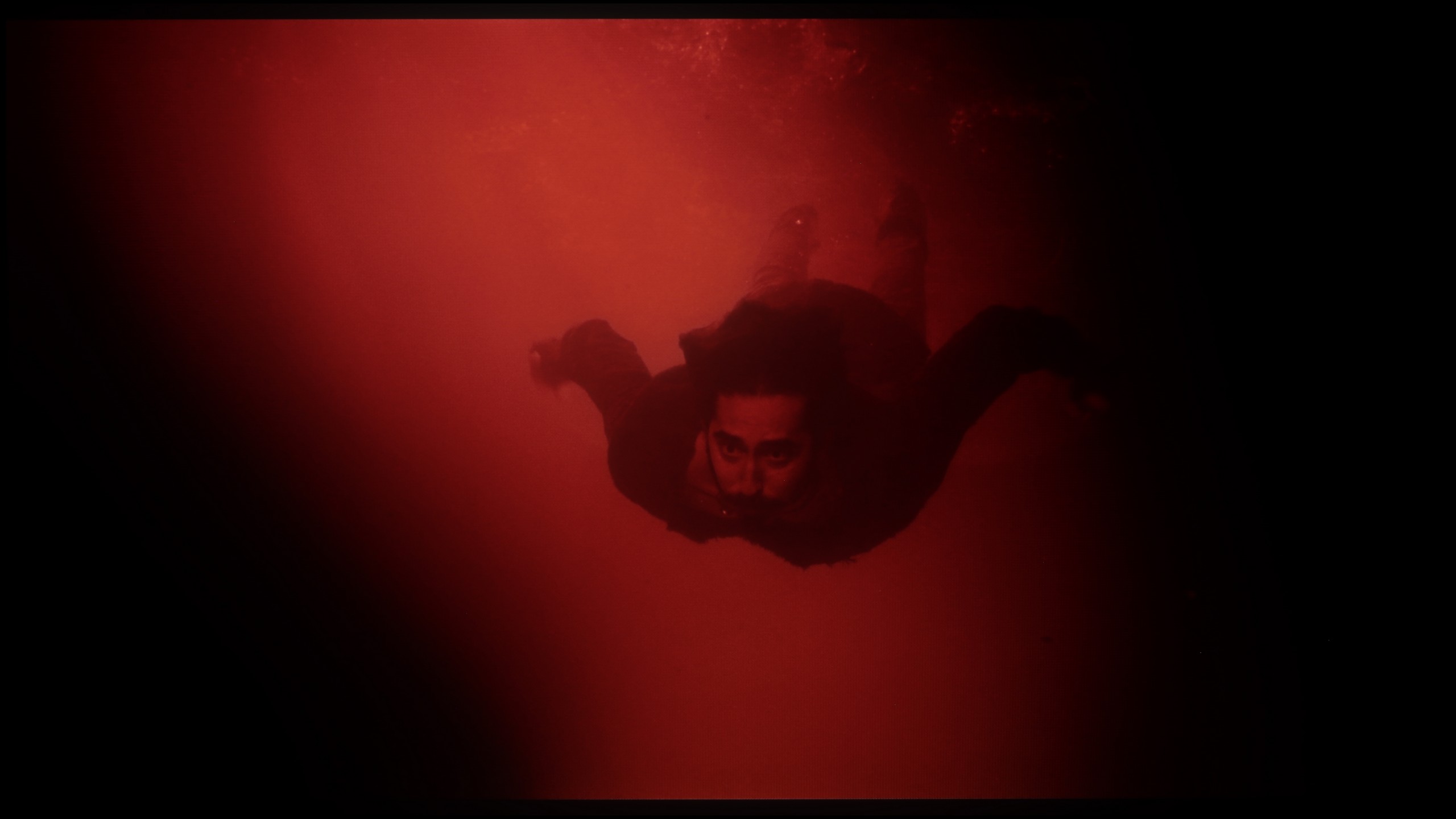




We must honestly admit that the fluidity of tonal transitions in this TV is right at the top of what we've had the opportunity to test in 2024. Even in really demanding scenes, we hardly notice any noticeable "steps" between colours. Yes, with a keen eye, one might spot some minor flaws, but that's at a level that's almost microscopic. You really need to have a very "alert" eye to catch them. This, in turn, means that when watching even the most complex shots in a full spectrum of colours, you can simply focus on the story and visual impressions without the annoying, artificial effect of posterization.
In this category, the Hisense E8Q really demonstrates its quality. The transitions between colours are very smooth, without any "steppings" or clear boundaries between tones. The image looks natural, and the colour gradation performs exceptionally well – even in more challenging scenes. If there are any minor imperfections, they are subtle enough not to be noticeable. It's hard to find fault here – it looks almost perfect.
Image scaling and smoothness of tonal transitions
6/10
6/10
Smooth transition function


Image without overscan on the SD signal


When it comes to the tonal transition smoothing function in lower quality materials, the “smooth and gradient image” feature in Hisense E7NQ PRO unfortunately does not impress. At the lowest setting, the change is barely noticeable – it's more of a cosmetic improvement. Switching to “Medium” mode does produce a noticeable effect, but it's still nothing special, and the TV starts to excessively interfere with other elements of the image, which can look unnatural.
Image scaling is also rather average. On the test screen, where a portrait of a model and text are displayed, there are slight frays at the edges, making the overall presentation less smooth and aesthetic than we would expect in this class of device. It's just hard to talk about really effective improvement of lower resolution quality here.
In the case of older materials of lower quality, gentle smoothing of tonal transitions often comes in handy. The Hisense E8Q, like the U7Q, has a "Smooth and Gradient Picture" feature, but unfortunately, its effectiveness leaves much to be desired. The "Low" setting is nearly invisible in operation, while higher settings blur details instead of improving transitions. The good news is that the feature does not compromise film grain, which means it does not degrade the structure of the image. On the positive side, scaling is commendable. The TV can reasonably convert older content to a higher resolution – without artificially accentuating contours or excessive sharpening. Although it doesn't match the best models in this category, it performs quite well for its class.
Blur and motion smoothness
7/10
7.5/10


Blur (native resolution, maximum refresh rate):



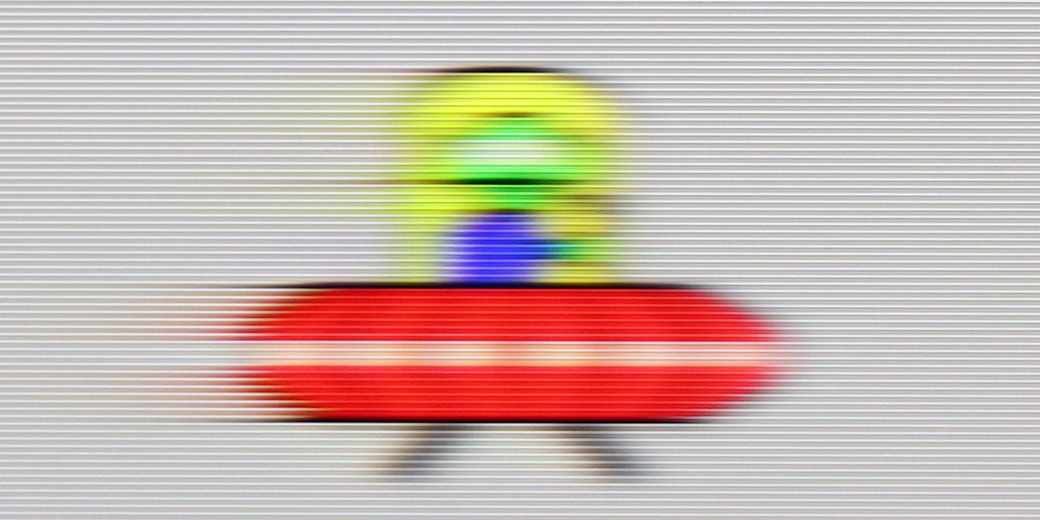
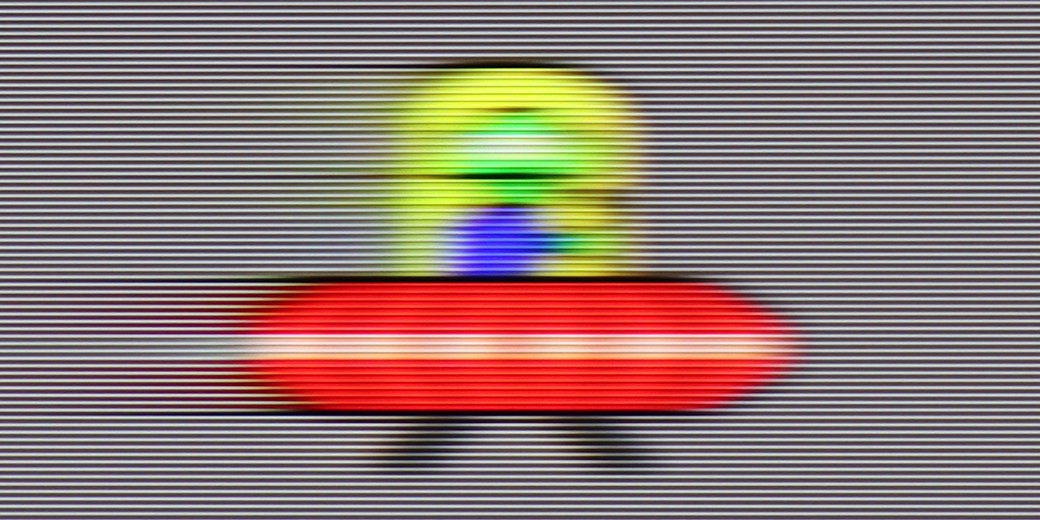

Blur (BFI function enabled):



Smużenie ():
Smużenie (4K 120Hz):
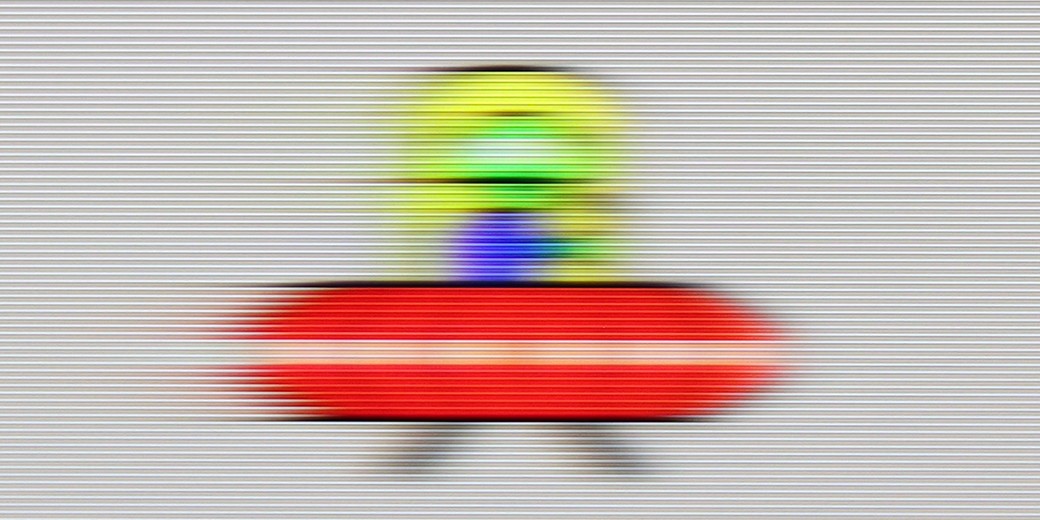
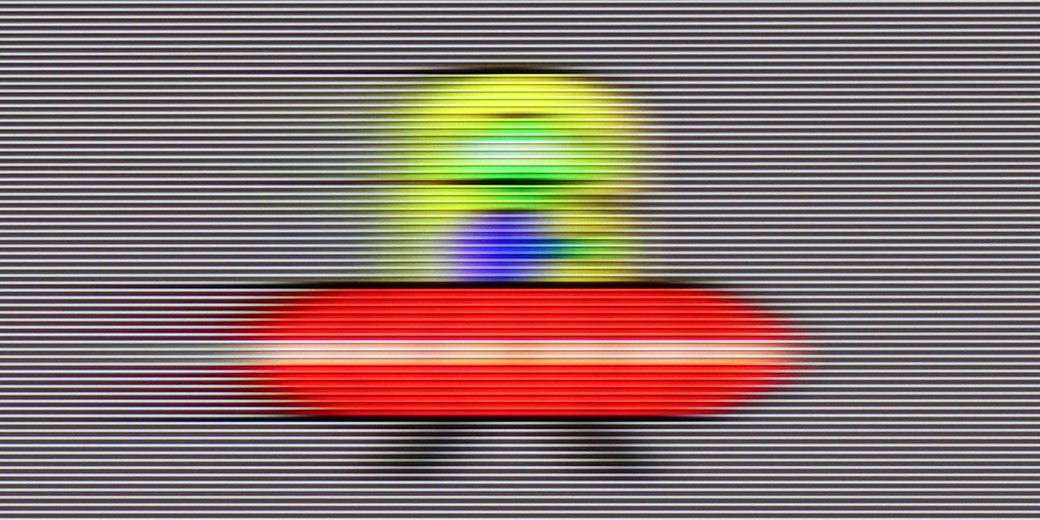
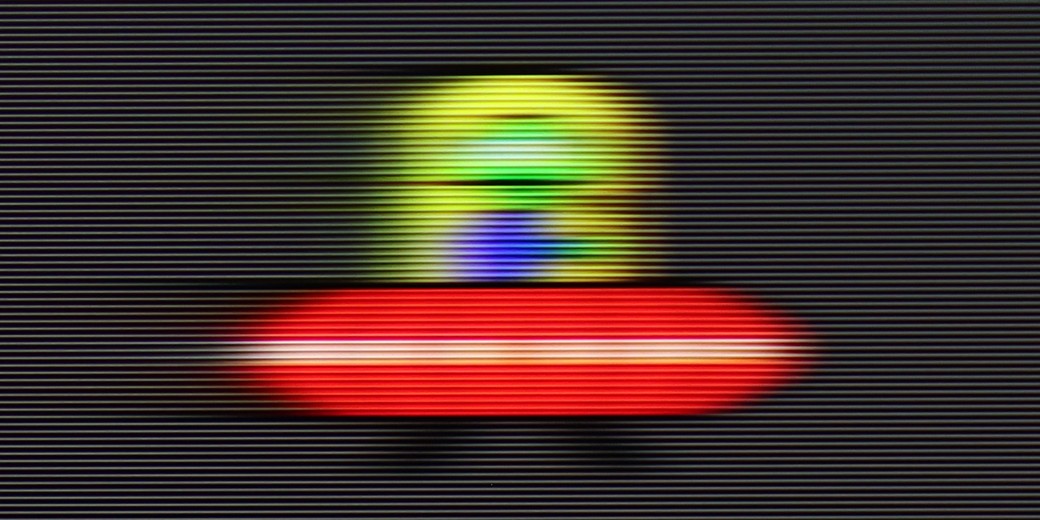
Thanks to the use of a 144 Hz panel, E7NQ PRO performs exceptionally well with almost any type of content. Whether we're watching fast-paced matches, dynamic games or action films – the fluidity of motion leaves a good impression. When it comes to movies, the manufacturer has equipped the TV with two key tools: “motion blur reduction” and “judder reduction.” Each of these functions can be adjusted on a scale from 1 to 10.
At lower values, the processing is subtle, barely noticeable, and gently smooths motion without ruining the cinematic character of the image. The higher we move up the scale, the more clearly the TV interferes with the presented material, smoothing motion more aggressively, thereby minimising any judders or micro-cuts. Conversely, the highest settings can resemble the so-called “soap opera effect,” which makes the image look overly smooth, slightly losing its cinematic atmosphere. Thanks to this scale, however, we can find a happy medium, adjusting motion fluidity to our own preferences.
Similar to the U7Q, the E8Q model is a fast television designed with dynamic content in mind. It supports a 144 Hz refresh rate at 4K resolution, and if for some reason someone is still gaming in Full HD – it can even reach 240 Hz. This is a significant advantage, especially for PC users looking for maximum smoothness. In everyday use, the television performs very well. The “Ultra Motion Smoothness” mode gives us two sliders, allowing you to set the picture to your preference – whether it's more cinematic with the film frame preserved or highly smoothed, almost “TV show-like.” It's good that the manufacturer provides a choice here, instead of imposing one style. On sports material, live broadcasts, or in games – motion looks clean and stable. Sure, it’s not at the OLED level, but for this price range, the E8Q does a really good job.
Console compatibility and gaming features
8.5/10
8.5/10
- ALLM
- VRR
- VRR range48 - 144Hz48 - 240Hz
- Dolby Vision Game Mode
- Correct implementation of HGIG
- 1080p@120Hz
- 1440p@120Hz
- 4K@120Hz
- Game bar



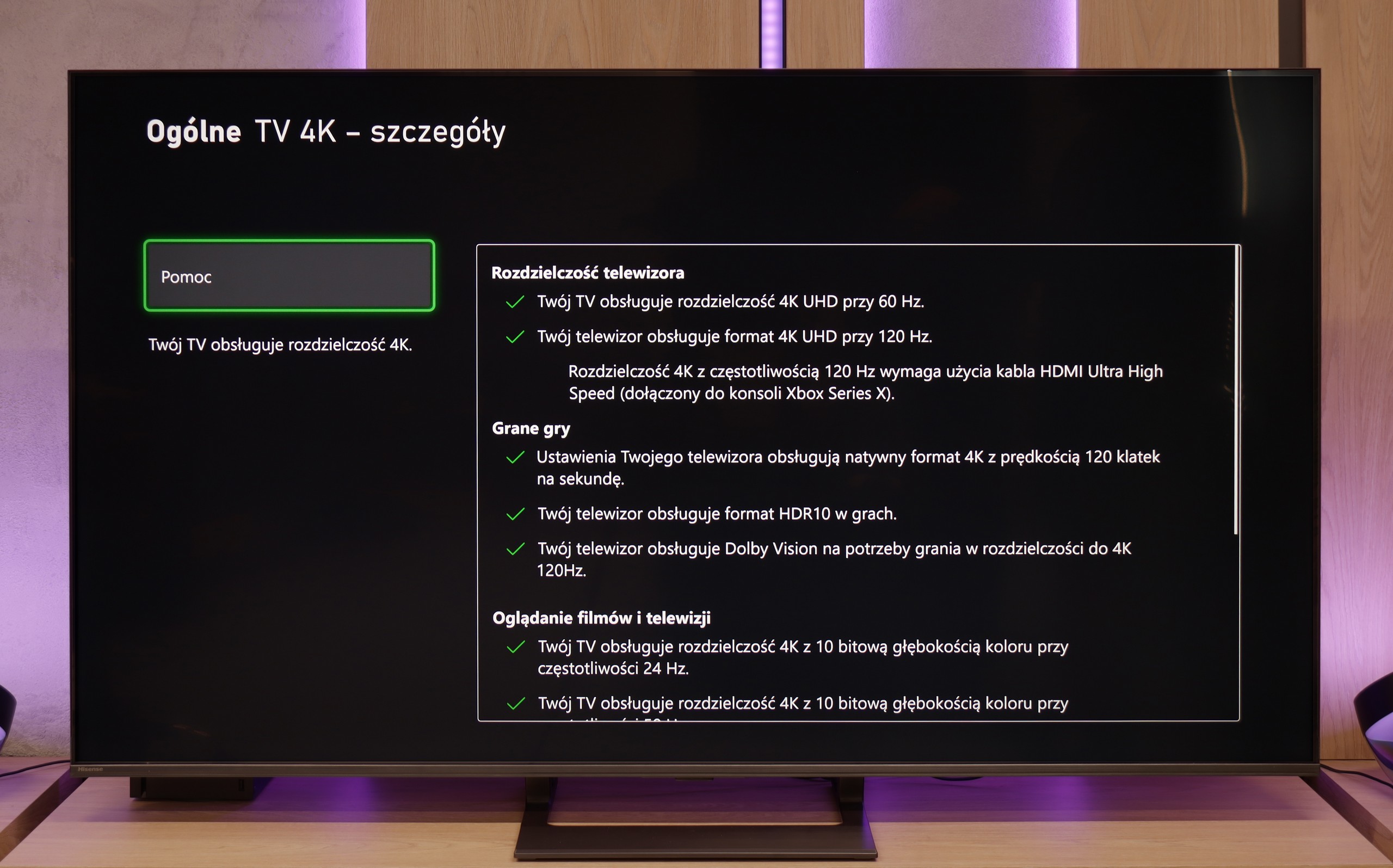

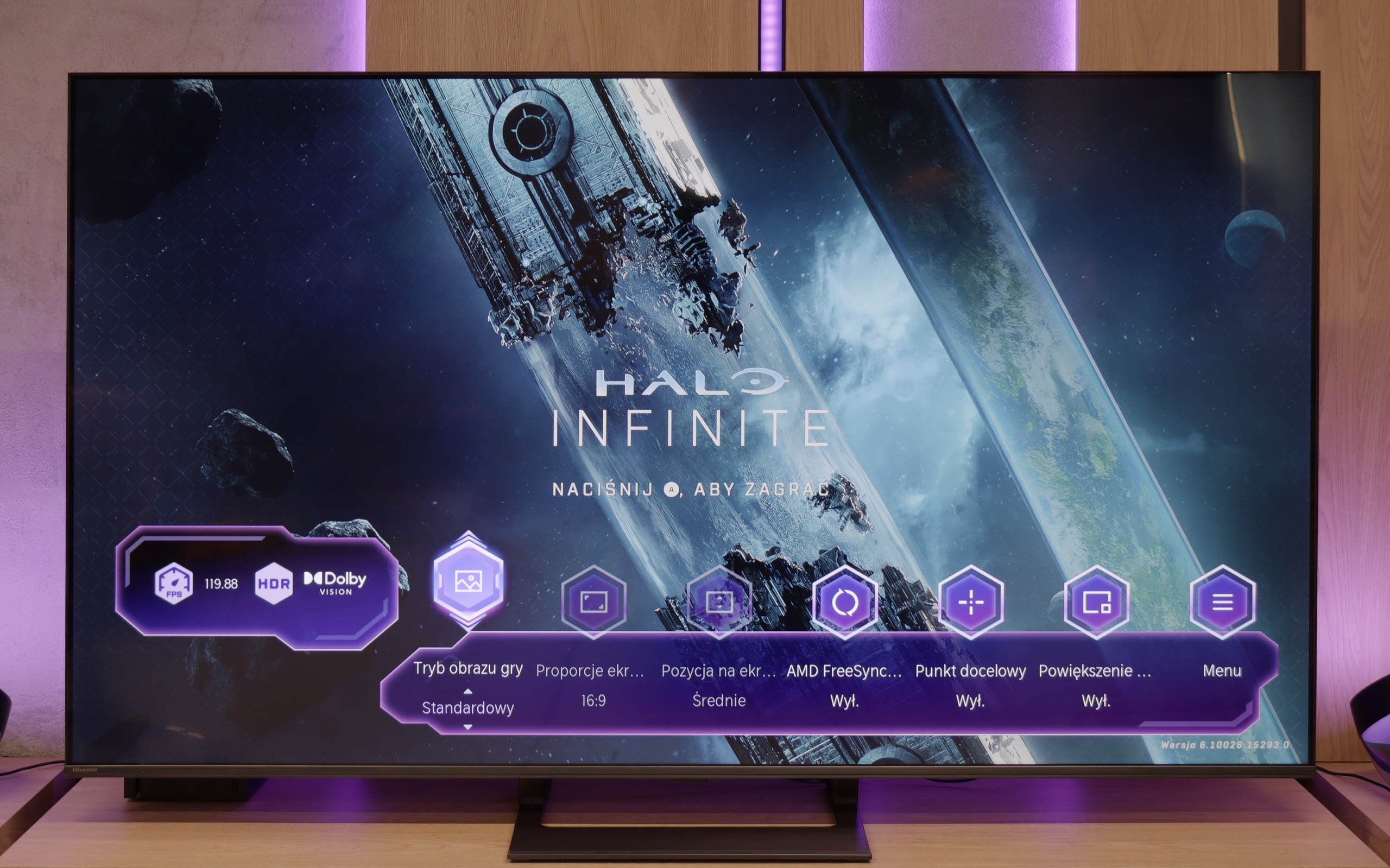


If we sometimes like to turn on the console and immerse ourselves in the world of games for long hours, E7NQ PRO can make a really good impression. Thanks to the 144 Hz refresh rate, the gameplay is surprisingly smooth, and support for HDMI 2.1 and VRR ensures that the image doesn't "tear" even during the most dynamic actions. Additionally, there's ALLM, which automatically sets the lowest latency as soon as we switch to the console – so we don’t have to fiddle around in the options ourselves.
A big plus is also the ability to launch games in Dolby Vision, which makes colors and contrast simply look better. Hisense has also included a clear "gamebar," allowing us to continuously monitor the key parameters and change settings without leaving the game. The only thing we might slightly regret is the lack of HGIG support. It may not be a crucial element, but for some gamers, it can matter if they aim for the most faithful reproduction of the creators' vision. Nevertheless, in practice, the E7NQ PRO performs excellently and delivers truly enjoyable gaming experiences.
Hisense E8Q does not hide its gaming pedigree. Just the specifications reveal that we are dealing with a television that will perform excellently as a gaming screen. Variable Refresh Rate (VRR)? It's there. Automatic Game Mode switching (ALLM)? That's there too. Additionally, there's impressive refreshment – 120 Hz in 4K or even 240 Hz in Full HD. Such a set is rare in this price segment. Everything runs smoothly and without major surprises. The only missing element – similar to the U7Q – remains support for HGiG. It's a shame because this feature facilitates adjusting the brightness curve to the capabilities of the specific television, enhancing visual fidelity with the intentions of HDR game developers. Without it, manual tweaking of the settings is necessary, which does not always yield a satisfying result.
Input lag
9.9/10
9.7/10
SDR
HDR
Dolby Vision
In this regard, Hisense E7NQ PRO really performs well. At a frequency of 60 Hz, we recorded around 15 ms, and at 120 Hz, the input lag drops to as low as 6 ms, allowing for very quick reactions and smooth controls in games. It's also worth mentioning that even in Dolby Vision mode, the input lag doesn't drastically increase. This means we can enjoy better image quality without sacrificing responsiveness, which will definitely please any avid gamer.
The E8Q handles delays very well. For 120 Hz content, the input lag is super low – practically imperceptible even for more demanding players. At 60 Hz, the values are slightly higher, but still comfortably within the "placebo" range – there's nothing to complain about. The biggest increase in latency was noted in Dolby Vision Gaming mode. The TV needs more time to process the signal then, but even in this scenario, it doesn't exceed 30 ms. These may not be ideal values, but for most players – especially console gamers – it won't be a problem.
Compatibility with PC
7.6/10
8.6/10


Connecting E7NQ PRO to a computer will give us no reasons to complain. Overall readability of fonts is quite good, although with very thin horizontal lines (the so-called "roofs" of letters), we noticed a slight dimming. It’s not a big issue, but worth mentioning if we plan to spend long hours in text editors or browsing the web.
On the other hand, when it comes to gaming on PC, the TV shows its true colours. Support for G-Sync, connection to a 144 Hz panel, and low input lag ensure that even the most demanding titles run smoothly and responsively. As a result, we have a screen that works well not only with a console but also as a solid "window" into the world of PC entertainment.
In terms of collaboration with the computer, the E8Q performs really well. It supports chroma 4:4:4 at full 4K resolution and the highest refresh rates, so the readability of fonts – even the smallest ones – is at a very good level. There are slight blurriness issues with exceptionally thin fonts, but in everyday use, it's hard to consider this a serious problem. A nice addition for PC gamers is the ability to achieve up to 288 Hz at lower resolutions. The E8Q communicates effortlessly with powerful graphics cards, making it an interesting choice not only for movies or consoles but also for gaming on the computer.
Viewing angles
6.5/10
3/10
In the case of Hisense E7NQ PRO, viewing angles are definitely a strong point, thanks to the IPS panel. This means that when we look at the screen even from a significant angle, the colours and brightness do not "drop off" as much as they do in TVs with VA panels. Of course, compared to OLED or QD-OLED screens, where the image remains virtually unchanged from any side, IPS still comes up short. Nevertheless, among LCD TVs, it is difficult to find a solution that guarantees such good viewing angles as those offered by IPS. Unfortunately, everything has its price – in this case, one must come to terms with average black levels and lower contrast.
E8Q, like most TVs with a VA panel, looks best when we're sitting directly in front of the screen. In this position, you can expect deep blacks, good colour saturation, and high contrast. Unfortunately, just shifting a little to the side causes the picture quality to drop – colours start to fade, and blacks become more grey than black. It's not surprising, but it's worth keeping in mind, especially if we plan to watch with a larger group from different spots in the lounge. On the bright side – in return, we get significantly better black levels than in IPS panels.
TV efficiency during daytime
6.2/10
6.2/10




Matrix brightness
Average luminance SDR
Hisense E8Q: 504 cd/m2
Hisense E7NQ PRO: 478 cd/m2
On a bright day, E7NQ PRO performs quite well. The "satin" panel diffuses light effectively, so reflections and glare don't turn into distracting "spots" on the screen. With average brightness at around 500 cd/m², you can comfortably watch television in a sunlit room without much struggle to see details or clear content. It may not reach the level of the top premium models, but in everyday use, it still performs pretty decently.
Hisense E8Q isn't afraid of bright interiors. Even when the sun is shining outside, the television can maintain good image readability. With a brightness level of around 500 nits, you can comfortably watch content during the day without feeling like everything is drowning in glare. The satin screen coating also helps to nicely minimise reflections – it doesn't completely eliminate them, but reduces them enough that they don't interfere with everyday viewing.
Details about the matrix
Subpixel Structure:

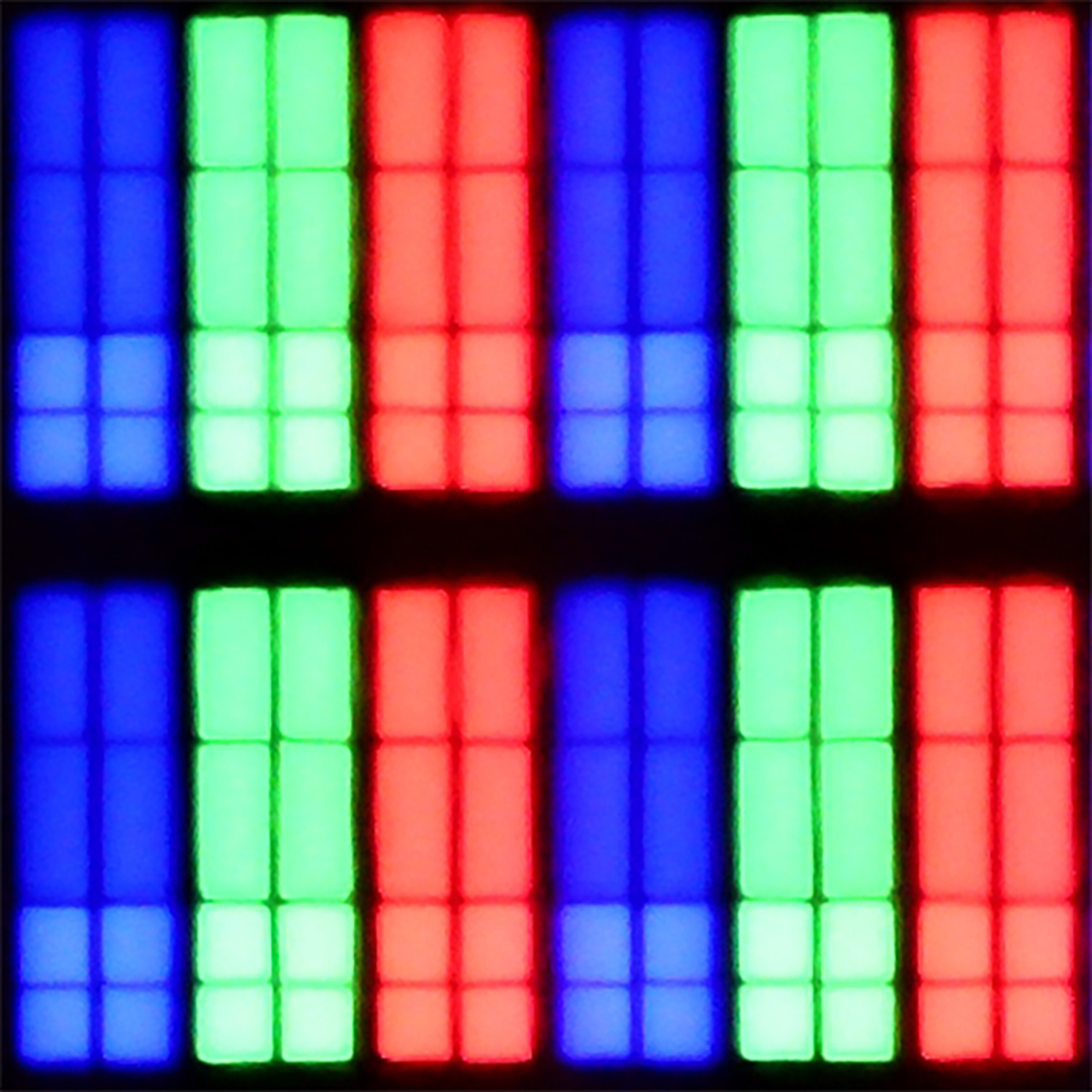
Panel uniformity:


Hisense E7NQ PRO
Hisense E8Q
TV features
8.9/10
8.4/10
- HDMI inputs2 x HDMI 2.0, 2 x HDMI 2.1 48Gbps2 x HDMI 2.0, 2 x HDMI 2.1 48Gbps
- Other inputsRCA (Chinch)RCA (Chinch)
- OutputsToslink (Optical audio), eARC (HDMI), ARC (HDMI), Mini-Jack (Headphones)Toslink (Optical audio), eARC (HDMI), ARC (HDMI), Mini-Jack (Headphones)
- Network InterfacesWi-Fi 2.4GHz, Wi-Fi 5GHz, Ethernet (LAN) 100MbpsWi-Fi 2.4GHz, Wi-Fi 5GHz, Ethernet (LAN) 100Mbps
- TV receptionDVB-T, DVB-T2, DVB-S, DVB-S2, DVB-CDVB-T, DVB-T2, DVB-S, DVB-S2, DVB-C
Classic features:
- Recording to USB (terrestrial TV)
- Recording programming
- Picture in Picture (PiP)
- RF remote control (no need to aim at the screen)
- Backlit remote control
- Teletext
- Audio only mode
- Possibility to connect Bluetooth headphones to the TV
- Possibility to simultaneously use Bluetooth headphones and the TV speaker
Smart features:
- AirPlay
- Screen mirroring (Windows Miracast)
- Wyszukiwanie głosowe
- Voice search in native language
- Ability to connect a keyboard and mouse


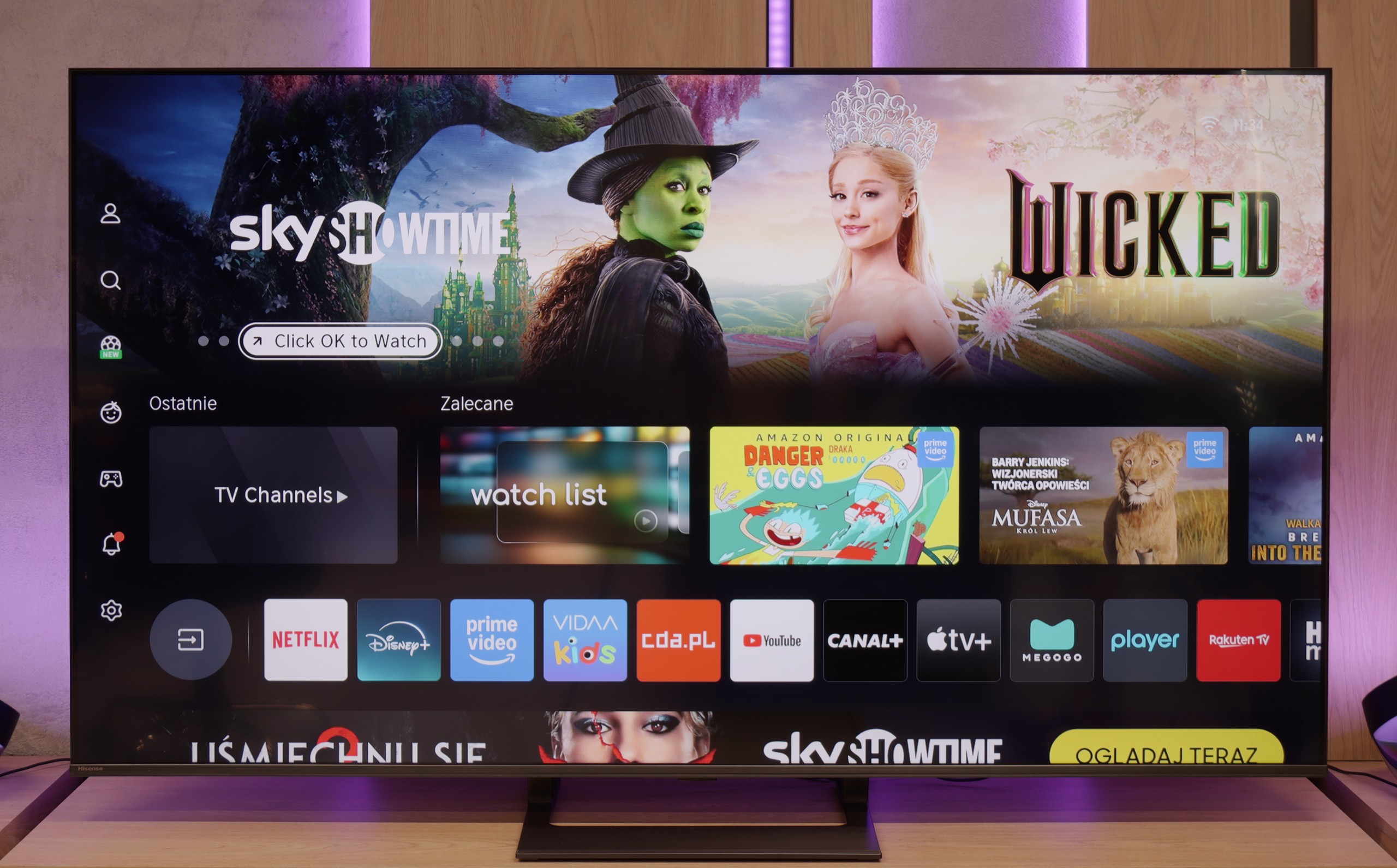
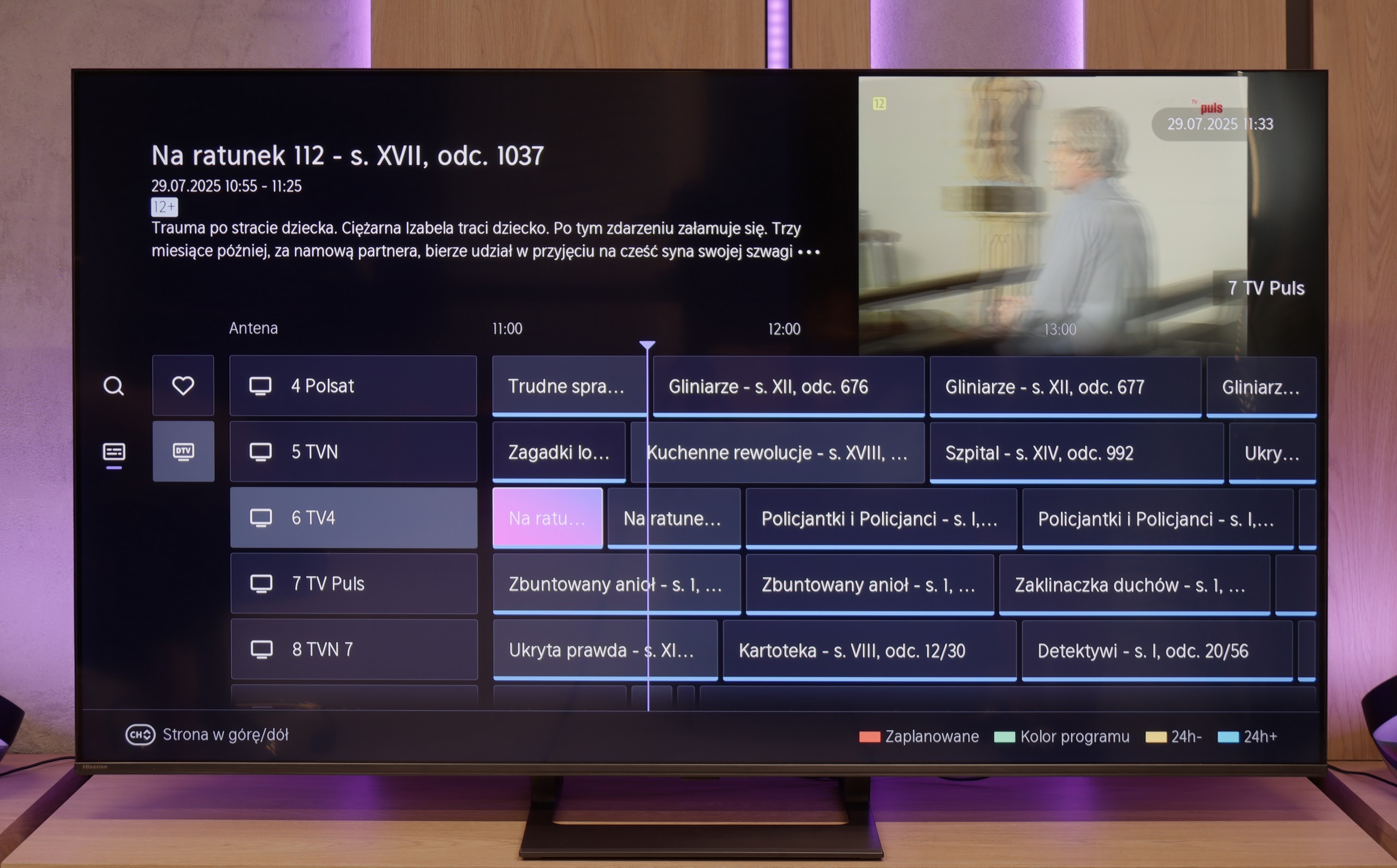


Hisense E7NQ PRO operates on the VIDAA system, which has recently made significant progress. You'll find most popular applications here, although unfortunately, some music platforms, such as Spotify and Tidal, are missing. Nevertheless, navigating the menu is quite pleasant, and the responsiveness is at a satisfactory level. Yes, there are occasionally minor 'stutters', but it's not something that will ruin our experience of everyday use.
On the plus side, we can count on support for voice search in Polish, which makes it easier to find favourite content without the tedious typing of letters one by one. The TV also offers plenty of additional options: we can record programs, use AirPlay and mirroring, and enjoy extensive wireless connectivity features (Wi-Fi and Bluetooth). It may lack a backlit remote control or Picture-in-Picture (PiP) mode, but those are relatively niche features, so not many will actually feel their absence. In everyday use, we simply have a solid base of useful tools and convenient solutions.
Classic Features – E8Q
The Hisense E8Q is not just equipment for gamers or movie enthusiasts – it can also serve as an everyday TV for the whole family. We can record programs to USB, connect headphones or speakers via Bluetooth, and the entire interface – including the channel guide – is clear and easy to use. It only lacks a PiP function, but besides that, the set of classic features is really complete.
Smart TV – VIDAA System
The E8Q runs on the VIDAA system, which is becoming more refined every year. Voice search in Polish works flawlessly, and it's easy to stream content from a phone (AirPlay and screen mirroring). The system itself operates smoothly, without hiccups, although – as is often the case with closed platforms – there may be one or two less popular apps missing. It’s worth checking before purchase whether it has everything we use daily.
Playing files from USB
5.2/10
8.2/10
Supported photo formats:
Maximum photo resolution:

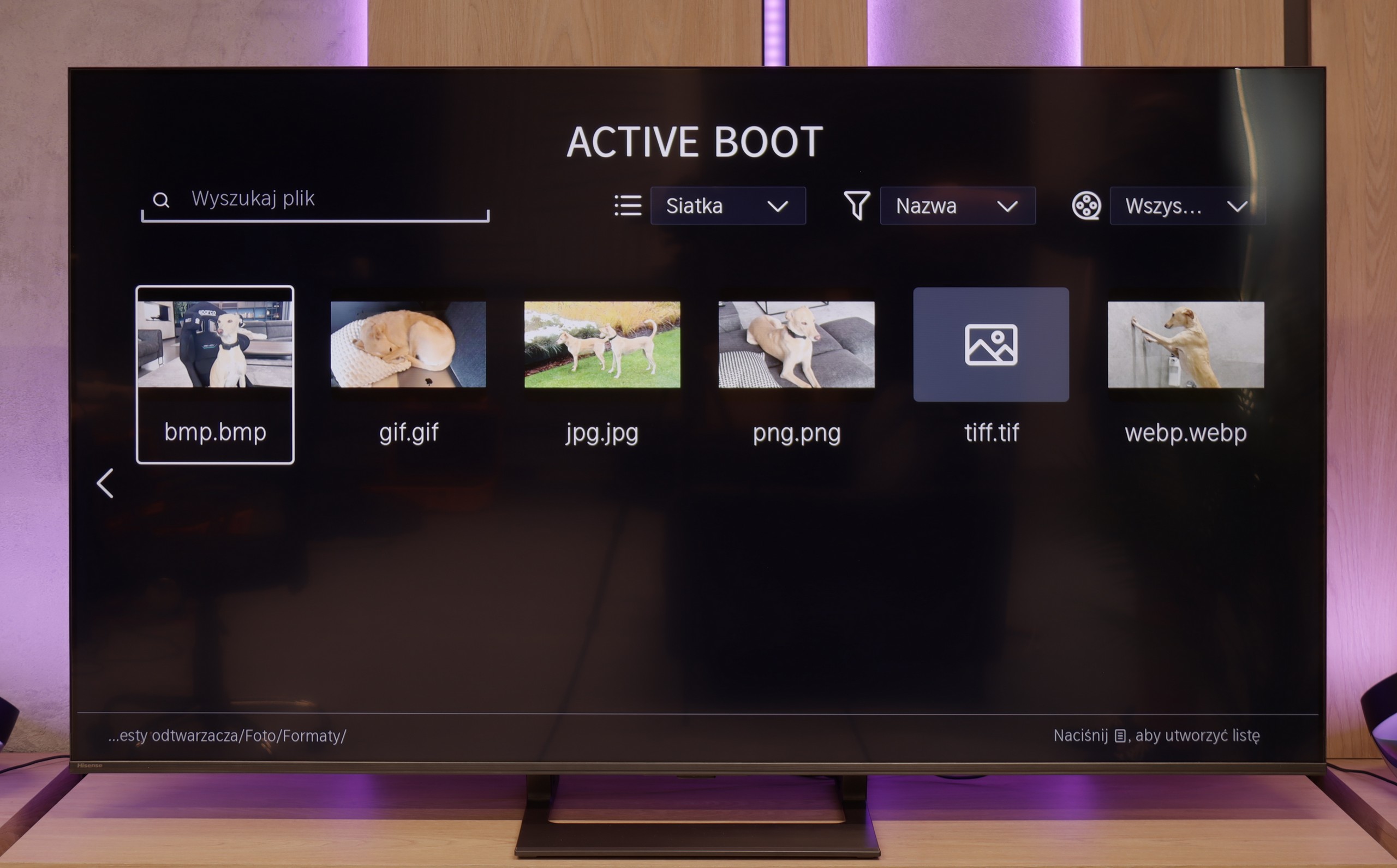
If we're counting on comfortable viewing of films with subtitles straight from a USB drive, we might unfortunately be disappointed. Just like in the previously tested A7NQ, here we encounter quite an odd situation: the TV doesn't display subtitles, even if we correctly place them on the storage device and try different formats. Paradoxically, we find options to change the colour and appearance of the font, but as they say – what's the point if we still can't see anything?
In the case of other files, such as photos or music, the E7NQ PRO manages without major issues, playing the most popular formats without a hitch. Unfortunately, for those wanting to use the TV as a multimedia player, the lack of functioning subtitles is a significant inconvenience.
The built-in media player in the E8Q performs quite well. It supports most popular video and audio formats, and files from USB drives or external disks play without major issues. Polish characters? They're supported. Subtitles? They work. The only minor drawback is the occasional problem with displaying high-resolution images – especially those from cameras or smartphones. So if you're planning to show holiday photos on the big screen, it’s worth checking beforehand that they all load correctly from the memory of the disk or USB drive.
Apps
7.7/10
7.7/10














































Sound
7/10
7.2/10
- Subjective sound quality:7/107.2/10
- Dolby Digital Plus 7.1:
- Dolby True HD 7.1:
- Dolby Atmos in Dolby Digital Plus (JOC):
- Dolby Atmos in Dolby True HD:
- DTS:X in DTS-HD MA:
- DTS-HD Master Audio:
When it comes to the built-in speakers, Hisense E7NQ PRO pleasantly surprised us. Of course, it's not on the level of a decent soundbar or home cinema setup, but in everyday conditions, it performs really quite well. During our tests, the dialogue remained clear, and the sound was sufficiently clean and spacious that we didn't feel the need to immediately invest in additional audio equipment.
The support for multiple audio formats is also a plus – from Dolby Atmos to the less common DTS:X. This means that if we come across suitable source materials, we can count on a more immersive, spatial experience. Although in terms of sound, it still mainly remains at the level of a decent baseline, Hisense E7NQ PRO should satisfy most users who simply want to turn on the TV and hear clear, uninterrupted audio.
Here unfortunately, the Hisense E8Q didn’t make the best impression on us. Although on paper it has speakers with a power of 40 W (which is just a bit less than 50 W in the U7Q), in practice the difference is significant – and unfortunately not in favour of the E8Q. During testing, it quickly became clear that something wasn’t right. When the volume was turned up above 40–50%, the entire back casing began to resonate, and unpleasant crackling sounds emitted from the TV. Even during regular viewing, it was hard not to notice this, and definitely hard not to hear. In this form, it’s difficult to talk about listening comfort. We don’t rule out that it was a problem with a specific test unit, but still – it’s worth keeping this in mind. If you care about good sound, consider connecting a soundbar or… go for the U7Q, which definitely performs better.


